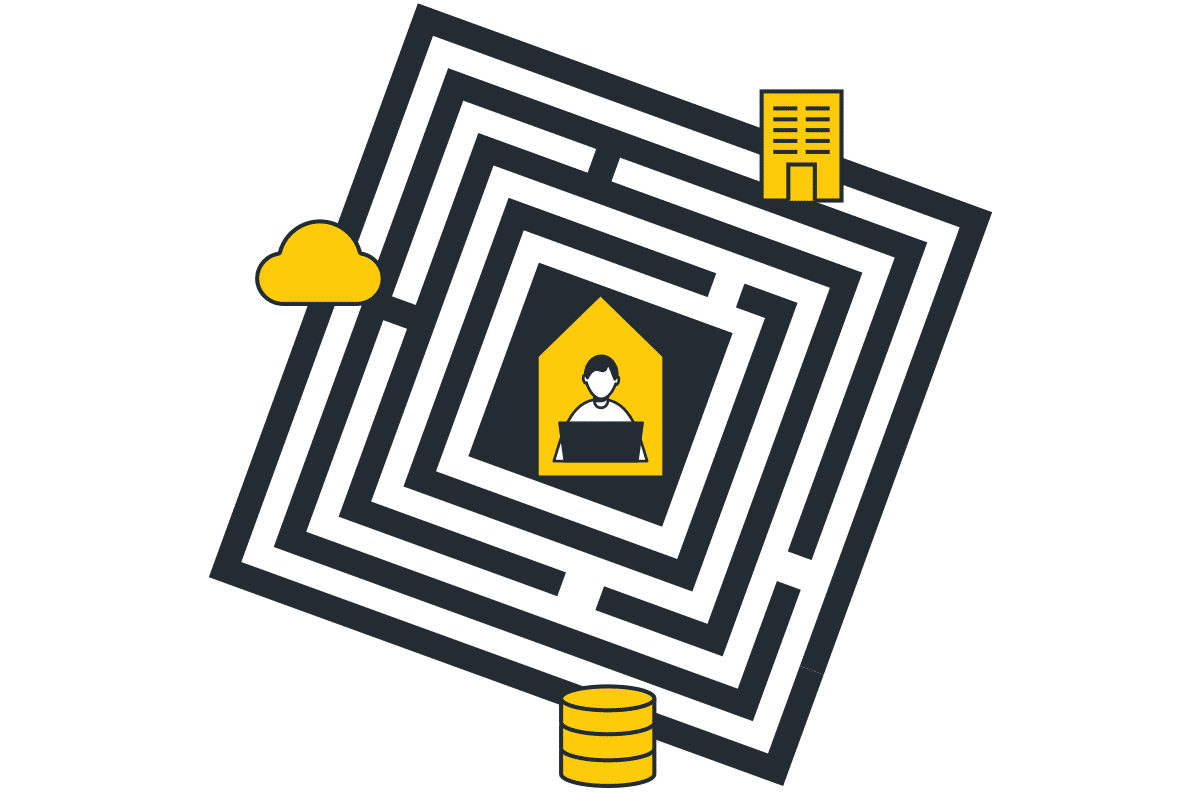Remote Access Solutions Have Evolved in Stages During the Pandemic: Ten Criteria for a Long-term Solution

|
Listen to post:
Getting your Trinity Audio player ready...
|
When pandemic lockdowns kicked in country by country and hundreds of millions of people were suddenly told to work from home, the world’s largest experiment in remote work got underway.
Companies have gone through several stages of coping with this massive work from home (WFH) undertaking. From utter chaos at the start of WFH, to a more measured approach, and now to seeking a long-term solution for a remote workforce that may take many months to return to the office—if ever. It turns out that the solution enterprises say they want is found in what SASE already delivers. See the list of enterprise requirements below.
Remote Access, Pre-Pandemic
In the pre-pandemic days, enterprises were very disciplined in their approach to remote access and WFH. VPNs were the primary method of connectivity for road warriors and people who occasionally worked from home or away from the office. It was standard procedure for an enterprise to build VPN capacity for a small percentage of its workforce. That capacity could be shared as workers connected for just a short time to check email or access files.
If personally-owned devices were allowed on the network at all – i.e., BYOD – the enterprise typically enforced security policies on those devices. Strong policies dictated which devices were permitted and what they could access.
Then COVID lockdowns totally upended this disciplined approach to remote access to enterprise resources.
The Early Stage of the Pandemic: Workers Go Home
In February and March of 2020, hundreds of millions of people around the world were told to stay away from their office workplaces. This happened practically overnight, with little time for IT departments to prepare for the massive onslaught of people suddenly working from home and needing continuous remote access to continue with business.
Companies first tried to cope with the existing VPN infrastructure, but that was soon overwhelmed. Workers were encouraged to “just connect any way you can.” The carefully scripted remote access and BYOD policies were abandoned in favor of giving people access to the WAN to stay productive.
Workers have relied, in many cases, on personally owned laptops and tablets and their consumer-grade home Internet connection. With spouses and students also at home, Internet bandwidth is constrained, resulting in unreliable service and frozen Zoom calls.
As time went by, IT departments scrambled to add new VPN appliances and licenses and more capacity for remote access. In fact, 72% of respondents to the Cato 2021 Networking Survey say their organizations invested in their existing infrastructure to scale VPN resources as a response to remote working.
Nevertheless, this is still a short-term solution to the WFH dilemma, as VPNs are an inefficient technology for giving remote access to a very large number of workers — for many reasons. Performance issues abound as traffic is backhauled to a datacenter before going out to cloud-based applications.
Security is a concern as well. First of all, enterprises have built a full stack of security solutions in their central and branch offices. This security doesn’t extend into workers’ homes, which increases risks to the organization. What’s more, VPNs provide overly broad access to the entire network without the option of controlling granular user access to specific resources. Finally, the IT department has no visibility into what is happening over these appliances. The user experience suffers when problems occur, and no one knows the root cause.
The Next Stage: Looking for a Long-term Solution for Remote Access
Enterprises have realized that WFH is a workstyle that is here to stay for quite some time. Seeing the shortcomings of attempting to get by with VPNs, they are now looking for a long-term solution that more closely approximates what workers experience when in their actual offices.
As we talk to these organizations, here’s what they tell us they need and want for the long haul. A remote access solution that:
- Is quick to deploy, with zero touch provisioning of end users and their devices, and no additional equipment to purchase or deploy.
- Is scalable to support tens of thousands of employees at once.
- Does not require backhauling remote employees’ traffic to a central datacenter.
- Includes a full security stack for every worker, regardless of their work location—in office, at home, on the road – without backhauling traffic to a centralized location.
- Restores discipline over security policies that can be adjusted for various use cases and devices.
- Delivers good network performance that is not subjected to problems in the last mile (to the home).
- Provides clear visibility into what is happening on the network.
- Is available from anywhere.
- Has “always on” connectivity for continuous access to the enterprise security stack.
- Ultimately delivers the same experience as people get when they are in their offices.
- Provides centralized control of the solution.
A solution that meets all the above criteria is available today from Cato Networks. The free Cato eBook Work From Anywhere for Everyone explains how enterprises can easily deploy a secure, scalable WFH solution based on our cloud-native SASE architecture.
Even as employees slowly return to their offices in the coming year, enterprises will still need to offer remote access on a large scale for some time to come. Now is the time to deploy a solution that can keep employees fully productive no matter where they choose to work.








